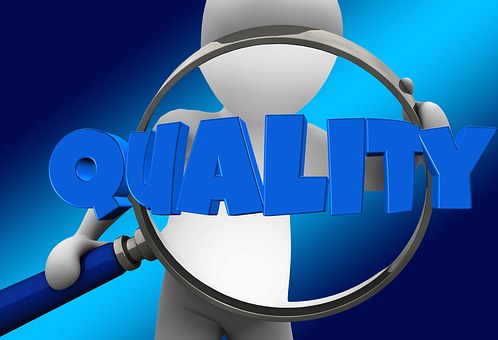Sarah HardingFebruary 11, 2019
Tag: GMP , Sarah Harding , Evolving World of Pharma
Good Manufacturing Practice (GMP) is a system for ensuring that products are consistently produced and controlled according to quality standards. Intended to minimize the risks involved in any pharmaceutical production, these guidelines provide minimum requirements that a manufacturer must meet to assure that their products are consistently high in quality, and appropriate for their intended use.

This simplistic definition is complicated by numerous factors. Perhaps most importantly, the rules may differ according to the overseeing regulatory agency – while most countries have legislated that manufacturers follow GMP procedures, many have created their own GMP guidelines that correspond with their own legislations. Efforts to harmonize different national guidelines go some way to mitigating this confusion, and can greatly smooth the paths of international trade. For example, an agreement signed in April 2018 between the EU and Japan allows the two territories to recognise each other’s GMP inspections, encouraging quicker and easier approvals. However, as a consequence of the work performed at the International Conference on Harmonization (ICH) level, GMP (and other) guidances are frequently in the process of changing, as their contents adapt to new approaches. Recent examples include the European Union’s new APIC Guide for Auditing Registered Starting Material Manufacturers (February 2018) and Guidelines on Good Manufacturing Practice specific to Advanced Therapy Medicinal Products (May 2018).
When a company is setting up its quality program and manufacturing processes, it is the company’s responsibility to ensure that it meets GMP requirements. It is vital to keep abreast of rules relevant to the country in which the pharmaceutical product is made, and also those countries in which the product will be used. Due to the complexities surrounding such requirements, it is not surprising that an entire industry has sprung up to help advise pharmaceutical (and other chemicals) companies on adherence to necessary regulations. Such third-party service providers can provide invaluable advice and support, but be sure to choose a partner with knowledge and experience in the world regions relevant to you.
A common complaint related to GMP – and other regulatory requirements – are associated costs, which are numerous and variable, covering everything from increased testing, record-keeping and quality control processes, as well as facility improvements, personnel training and third-party services needed to meet the requirements. Estimates for the cost of new equipment have run from $50,000 to $1 million, and annual costs are reported to range from $15,000 and $100,000.
In such cases, it might be encouraging to consider that GMP doesn’t only benefit the customer in terms of a quality promise – it can also positively impact a company’s reputation and profit margin. For example, GMP can have a tremendous impact on customer satisfaction, leading to more repeat business and a higher number of recommendations. GMP can also help to reduce waste in production. The strict guidelines reduce the risk of error because the manufacturing process is bound to consistency, control and specification. As the quantities of all products are measured and logged, there should be less need to dispose of large amounts of unwanted materials at the end of the process.
Nevertheless, GMP can be an enormous burden, especially for companies undertaking the guidelines for the first time. What can be done to minimize this burden? Readers of this column will be familiar with my passion for the digitization of the pharmaceutical industry, so you will not be surprised to read that this is yet another example of where we can apply the digital revolution.
Especially as companies move to meet GMP standards outlined in the Continued Process Verification (CPV) Stage 3 Guidelines issued by the Federal Drug Administration (FDA) and European Medicines Agency (EMA), those that have not yet digitized their systems will find such continuous monitoring to be time-consuming and costly, involving numerous information sources and mounds of data that can be difficult to analyze and interpret without the use of modern data analytics. Furthermore, as regulators increasingly demand immediate access to data, at inspections of pharmaceutical manufacturing sites or for Customs and Border Protection (CBP) audits, there is increasing pressure for companies to use their manufacturing data in an intelligent and manageable way that complements and helps guide their production processes. Investment in the right digital systems may provide a good return on investment, sooner than you might expect.
Author biography

Sarah Harding, PhD
Sarah Harding worked as a medical writer and consultant in the pharmaceutical industry for 15 years, for the last 10 years of which she owned and ran her own medical communications agency that provided a range of services to blue-chip Pharma companies. In 2016, she began a new career in publishing as Editor of Speciality Chemicals Magazine, and has more recently taken up the role of Editorial Director at Chemicals Knowledge. She continues to also provide independent writing and consultancy services to the pharmaceutical and speciality chemicals industry.
Register as Visitor to CPhI China 2019!
-----------------------------------------------------------------------
Editor's Note:
To apply for becoming a contributor of En-CPhI.cn,
welcome to send your CV and sample works to us,
Email: Julia.Zhang@ubmsinoexpo.com.


Contact Us
Tel: (+86) 400 610 1188
WhatsApp/Telegram/Wechat: +86 13621645194
Follow Us:




 Pharma Sources Insight January 2025
Pharma Sources Insight January 2025


